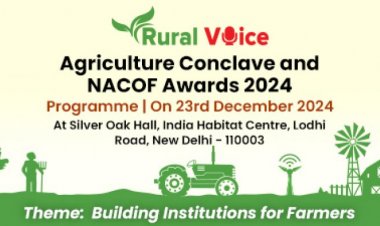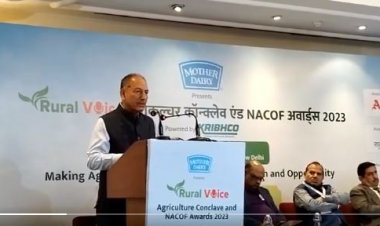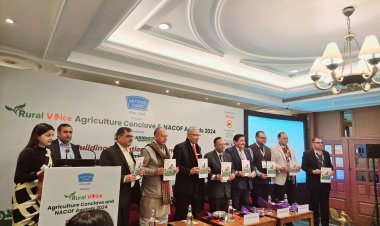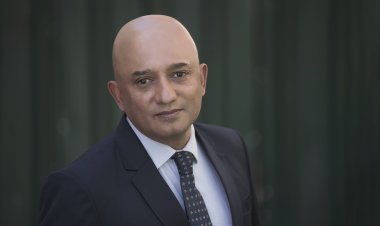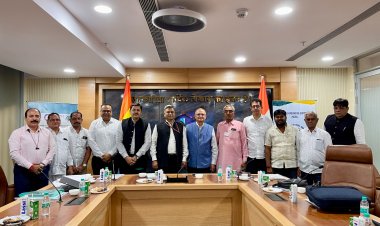Agriculture needs hand holding now: Existential crisis for rural India
Rural India has seen many changes. Things like infrastructure (roads, electricity connection) and access to various services have definitely gotten better thanks to different schemes of the Centre and the state governments. But these visible physical infrastructure facilities lead to rising aspirations of those living in villages and small towns to be at par with those in cities even as the pureplay agriculture, the core, is at risk of being left on its own. By the way, the aspirations of rural India are quite reasonable and doable, provided there is a political will and the menace of corruption is dealt with effectively.
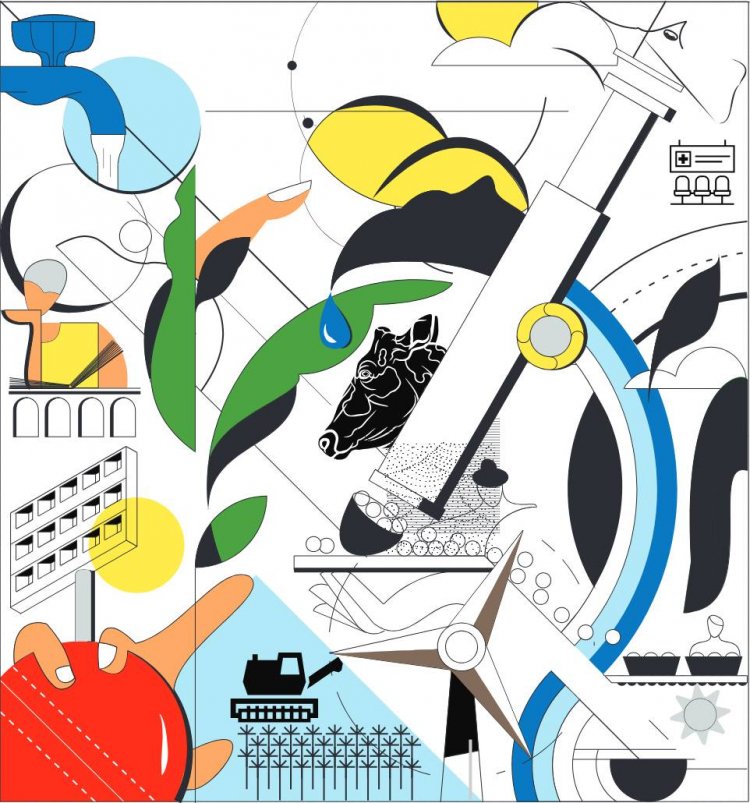
Indian agriculture faces an existential crisis with the entire rural landscape in the grip of societal and environmental challenges despite a visible improvement in infrastructure like roads, sanitation and mobile phones. You might ask: Is it a paradox of sorts then? The answer is 'Yes' and. based on a six-month -long direct interaction with the critical stakeholders like farmers' organisations, civil society, policy makers and market intermediaries not in New Delhi or metropolitan cities but in the states bottom up to smaller towns in five states with a wide diversity in agri-climate, economic strength, and crop patterns.
Our findings after this comprehensive interaction, converted into measurable data, would give you an impression about the state of agriculture which may not be in conflict with an assessment of a bureaucrat in New Delhi or a state capital but is a holistic view of the rural landscape that needs effective policy intervention and political support right now than later.
If you talk to senior government officials in New Delhi, they would tell you there has been significant progress in terms of new roads built, electricity connections or the houses and toilets constructed. They might highlight how mobile phones have become common in rural areas and how there is a growing market for all sorts of products and services.
Also Read This: No More Blue Skies: Rural India's Pollution & Climate Battle
Indeed, rural India has seen many changes. Things like infrastructure (roads, electricity connection) and access to various services have definitely gotten better thanks to different schemes of the Centre and the state governments. But these visible physical infrastructure facilities lead to rising aspirations of those living in villages and small towns to be at par with those in cities even as the pureplay agriculture, the core, is at risk of being left on its own. By the way, the aspirations of rural India are quite reasonable and doable, provided there is a political will and the menace of corruption is dealt with effectively.
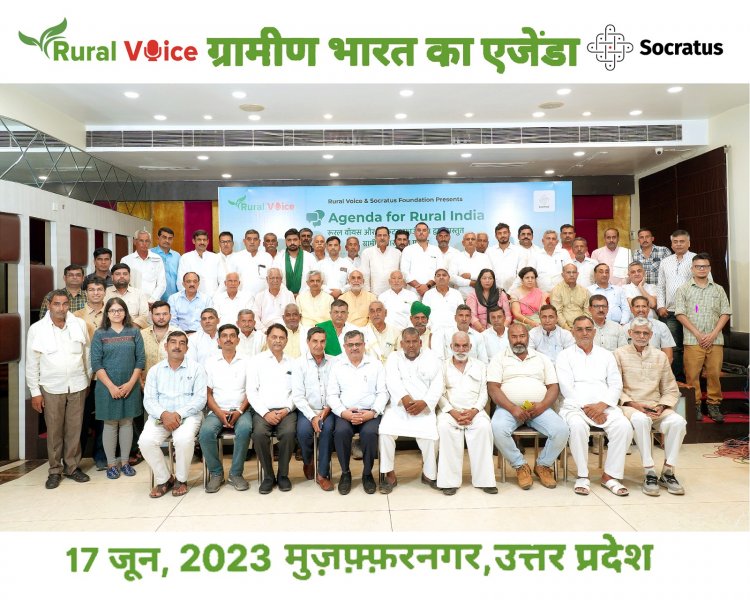
Risks to the core of rural India, that is agriculture, as highlighted in our cross-country interaction include high level of debts, unabated rise in input costs including increasing labour wage, indiscriminate sale of spurious pesticides, perilous risks of climate change and wild gyrations in prices of the harvest, coupled with a political apathy.
“Plastic mukt, paryavaran yukt, nasha mukt, wifi yukt. Parivahan suvidha sahit, pradushan rahit, 24 ghante bijlee aur ek stadium ho jismein ladke, ladkiyan, mahilayen roz daude. Adhunik shiksha aur swasthya ho aur krishi sambadhi jaankari vigyaan ke aadhar par mile.”
“Humare gaon hare bhare ho, jalstrot pariyapt ho aur shudh ho. Saaf suthre gaon ho, plastic mukt ho. Vidyalon mein ladke, ladkiyon ki sankhya khub badi ho, khaas kar sarkari sansthaon mein.”
This is what we heard when we asked people from Balotra, Barmer, Jaisalmer, Sikar, Nagaur and other districts of Rajasthan, who were gathered in Jodhpur, “2030 me aapka gaon ka sapna kya hai?”.
“Kisan to khush-haal hai hi nahin. Hundred percent kisan, karzdaar hua baitha.”
People in rural India have a dream – they want their villages to have the same facilities as cities. They hope for better education, healthcare, roads, electricity, and other things that make life comfortable and convenient, just like what people in cities have, at least some of them. If they have all these things, they believe they could live much better lives.
Also Read This: Agenda for Rural India: Agriculture- Difficult Harvests
The rural idyll of a peaceful, pollution-free village where everyone had work to do is far from reality. Rural life has changed, and it's not what it used to be. Many rural areas still lack basic facilities like reliable electricity, good roads, clean water, quality education, and healthcare. People are struggling, and farming is no longer a viable occupation for many – neither in terms of income nor social status. Moreover, rural inhabitants are facing new problems like climate change, pollution, lifestyle diseases, unemployment, and drug issues. These are problems that used to be thought of as city problems, not rural ones.
When Rural Voice, a sister publication of Rural World and Socratus, a non-profit organization, decided to embark on a first-of-its-kind pan-India convening series with citizens from rural India in order to hear their challenges and aspirations, it was driven by two main motivations. One, rural areas are often marginalized in mainstream discourse. In the news, rural areas are hardly present in the national imagination apart from stories surrounding farmer suicides, adulterated alcohol or debates on the mid-day meal scheme. In a country where more than half of its population is rooted in rural areas, this is an incredible mismatch in representation. The second reason pertains to the dramatic changes that have happened in the last 15 years across the rural landscape with the penetration of the internet and better infrastructure. Through these convenings, Socratus and Rural Voice aimed to capture the current state of mind of rural India as well as generate a conversation around the issues raised. This article aims to honestly reflect the views and feelings of the people we talked to about their lives, problems, hopes, and dreams for a brighter future.
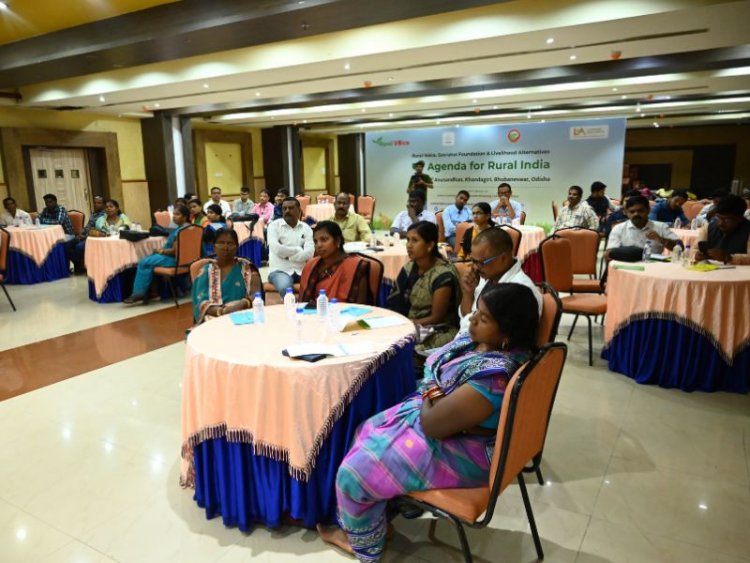
Our work covers people from 5 states of India, in an attempt to represent the diversity in the 5 regions: the north, south, east, west and north-east. We bring particular attention to our work in the north-east. Given its sparse population, distinct cultural diversity and remoteness, it is often excluded in national dialogues. However, keep in mind that India is vast and diverse, so we couldn't include every region or person's perspective. We picked five states from each region of India, and in each state we partnered with a local organization that helped us bring the diverse rural citizens together to ensure a wide representation of the local population. We tried to recreate the same setting in all five states while being sensitive to the needs of the participants in each location.
Also Read This: Rural India still awaits basic infrastructure and services
We had our convenings in 5 locations. At each location, we had a convening with people from 10–11 nearby districts. These locations were Bhubaneswar (Odisha), Coimbatore (Tamil Nadu), Jodhpur (Rajasthan), Muzaffarnagar (Uttar Pradesh) and Shillong (Meghalaya). These states are culturally, economically, agro-climatically, and politically different.
Our local partners were Livelihood Alternatives in Odisha; TNFPA (Tamil Nadu Farmers Protection Association) and FMIF (Farmers Merchants Industrialists Federation) in Tamil Nadu; South Asia Biotechnology Centre in Rajasthan; Umesh Panwar in Uttar Pradesh; and NESFAS (North East Society for Agroecology Support) in Meghalaya. With their help, we were able to bring together more than 300 participants from 60 districts.
People from different occupations participated in the convening. There were artisans, local traders and business owners, SHG group members, local elected officials, local government officials, labourers and migrants, college students, social workers, and service professionals. Care was also taken to ensure that people across gender and social groups were in attendance.
Design of the convenings
Group deliberation and negotiation
The format of the convenings was similar in all the regions. It included both group discussions and individual voting. To start, we had everyone introduce themselves to make everyone more comfortable. Then, we divided the participants into different groups with a mix of people. Each group talked among themselves and picked out the five biggest problems in their community. Afterward, each group shared these issues with everyone in the room.

The idea behind this approach was to encourage the participants to express their thoughts and feelings. We wanted to create a space where people could have discussions and come to an agreement on the most important ideas. Following this, the groups discussed hopes they had for their villages. Groups also figured out the top five things they wanted their candidates to promise in an election.
The important process here was that participants discussed their problems with others and then decided together which issues were most crucial. This way, they had to talk and negotiate with people who had different perspectives, and they worked together to find common ground. Our role as facilitators was to help this process happen without trying to influence what the participants said in any way.
In a democracy, people turn their opinions into political choices by voting. In India, how someone votes is influenced by their own thoughts and also by the views of the community they belong to.
Also Read This: Agenda for Rural India: Unemployed- Choice or Compulsion?
As a part of our last activity, we asked the participants to tell us about the most important issues that would affect their vote in both state and national elections. This was something they did on their own. In the past, we've noticed that Indian voters sometimes choose different parties between the state and national elections. We wanted to see if this pattern still held true.
Farming faces existential economic, social and environmental crisis
“Kisan to khush-haal hai hi nahin. Hundred percent kisan, karzdaar hua baitha.”
Costs of living have gone up and in the absence of commensurate increase in income from agriculture, farmers end up accumulating substantial debt.
The costs of inputs have gone up – from seeds to labour, fuel to pesticides. All of them now need to be bought from the market. In the case of fertilizers and pesticides, more is being applied every year. Farmers are unable to consistently fetch good and timely prices for their agricultural produce. Sugarcane farmers from Shamli complained that the Fair and Remunerative Price (FRP) hasn’t increased and that payments have been pending for years. A vegetable farmer in Odisha said he lacks transport and cold storage to reach distant markets, which was also echoed in Meghalaya. Farmers from Tamil Nadu spoke about ensuring price support for all crops given this volatility.
While costs have increased, the risks around farming have increased as well. Climate change is causing erratic weather including heat waves, rainfall, frost, pest attacks. Conversations around climate change have moved away from elite circles and are now a lived reality for everyone. It was discussed in great detail in every location. Be it mangoes or sugarcane, rice or tomatoes, every crop is being impacted by climate change and people seem helpless. Human–animal conflict is increasingly manifesting itself and differently in different parts of the country. Stray cattle were the most critical issue in Uttar Pradesh, which has forced farmers to sleep in their fields. Animals are destroying crops in Odisha and in Rajasthan. Around Coimbatore, wild animal conflicts such as those with elephants are widespread and on the rise.
“Chemical ka atyadhik upyog sabse zyada barbaadi ka karan hai, gaon mein. Chemicals bahut zyada hai. Chahe woh zameen mein ho, janwaron mein ho, insaano mein ho. Har jagah chemical hi chemical hai.”
We were in Muzaffarnagar, a city in western Uttar Pradesh (UP). Along with Punjab, this region is at the heart of the green revolution in India. However, in a place like Muzaffarngar, the fact that the farmers themselves are bringing up the issue of overuse indicates how unbalanced the use of fertilisers and pesticides has become.
“Nakli pesticide aa gayi hai – koi checking nahin hai.”
“Dealer trade me lala log baithe hain jinko agriculture ka ABCD bhi nahin pata. Wo hume dawayian de rahen hain.”
The critique of excessive chemical use was present everywhere we went. The narrative concerning natural ways of farming was surprisingly popular. People said the chemicals led to poor soil fertility, water contamination, lower food quality, serious diseases, and higher expenses. Farmers are caught between the “natural” and “regular” farming narratives. Recurring and unexpected pest attacks need urgent attention for which solutions apart from using pesticides are not clear. The push for making farming sustainable and food healthy so that it works for both people and the planet is well and truly widespread, especially in Rajasthan and Odisha. In Muzaffarnagar and Coimbatore, farmers want to go more “natural” but are unsure whether it will work and the risk appears too big for many. Overall, suggested solutions ranged from banning spurious pesticides, regulating dealers, educating farmers about balanced use of artificial inputs to going completely organic or leaning towards natural soil supplements. As a farmer from West Khasi Hills pointed out, as farmers, they should take care of the environment and, in turn, the environment will take care of them.
Difference in aspirations and reality fuels labour shortage, unemployment and drugs
“Agar Bihar ke mazdoor na aaye, to aap kheti nahin kar sakte. Humne khud karni chod di hai.”
Be it Muzaffarnagar or Coimbatore, farmers everywhere complained that finding labour to work on the farms is a struggle. According to farmers, the wages for labour have become too high. And this is despite young people from the village not having any jobs. Young people would rather not do any work instead of labouring in the fields. As a result, land owners are dependent on migrant labour on many occasions.
“MNREGA ko kheti mein jodkar nuyntam mazdoori sunischit ki jaye.
Jo sabse badi samasya hai humare rajnaitik tantra ki, woh hain 'freebies'.”
The challenge of labour prompted a farmer from Baghpat to say that agricultural labour should be considered under Mahatma Gandhi National Rural Employment Guarantee Scheme (MGNREGS). As a result, the scheme would compensate for part of the labour cost. Another opinion among land-owning farmers across regions is that the so-called “freebies” must be stopped. It is making people dependent on “handouts” and affecting their intent and availability to work.
Kisan se aaj kal koi shaadi nahin karta. Bacche AC me baithna pasand karte.
The future of agriculture in India looks precarious not just because of the economic or environmental challenges mentioned, but because of a deep social challenge. Young people don’t want to do farming. Farming is not aspirational anymore. Men who continue to farm are finding it difficult to find brides. Society sees it as a dead end – backbreaking, uncertain and unremunerative. The likelihood of being pushed into debt with a bad harvest are high.
As a result, young people, supported by their families, are completing higher levels of education. However, there are hardly any good jobs in villages except for the rare government ones. Non-farm employment opportunities such as manufacturing, services, or small-scale industries are scarce. The blame for this is attributed to many factors: limited quality education in rural areas, absence of vocational training and lack of credit and infrastructure to enable rural industries to grow. The end result: young men and women, full of ambition and potential, are unemployed.
“Gaon nasha mukt hona chahiye, yeh sab ki prathmikta hai. Nasha nahi hona chahiye aur iske prati yuvaon mein jagrukta bahut zaroori hai.”
In 2016, the Hindi movie Udta Punjab brought the drug epidemic in Punjab to popular imagination. In 2023, it appears that drug usage is now not just limited to urban elites and regions of Punjab. Be it in Bhubaneshwar or Jodhpur, we heard the same thing: a large number of youths are consuming drugs across all social groups.

Alcohol has long been a major problem in rural areas. It continues to be as we heard in Meghalaya, Tamil Nadu and Odisha. However, widespread consumption of drugs across India seems to have escaped the notice of the mainstream media. In the absence of a deeper understanding, one can hypothesize about the various causes for this epidemic. Is it due to joblessness – dreams colliding with stark reality? Is it because of popular songs and media making it “cool” and acceptable? Or is it because drugs seem to be more easily available? Joblessness, lack of engaging social institutions, increased desirability and availability of drugs is now seem to be fueling a drugs epidemic across India.
Village infrastructure still unable to provide basic services
People are still waiting for good quality basic infrastructure. People from the Garo, Khasi and Jaintia tribes in Meghalaya still need good road connectivity to enable movement of goods and people. Road connectivity has improved but not enough. And if roads are there, public transport is unavailable. The same goes for electricity. Constant electricity supply throughout the day is still a dream for rural India. The need for constant connection to the internet is also a necessity now.
A farmer from Balotra (Rajasthan) is still in need of clean water for drinking, echoing the sentiments of people in the opposite corner of India, in Meghalaya, who also want tap connections. In Muzaffarnagar, farmers have water but are concerned about toxic chemicals and metals that have seeped into groundwater.
There is a deep sense of being left behind when it comes to education in villages. The growing gap between government and private schools is gnawing at people. People want excellent public education. Even if the schools are there, the number of teachers is not sufficient. The government schools are considered ill-equipped to provide “quality education” that can lead to good careers for young people.
The need for good health and healthcare is increasingly felt across locations. With increasing lifestyle diseases, people need better treatment. Multi-speciality hospitals are far away from villages. Local health infrastructure leaves a lot to be desired. PHCs and CHCs are not sufficient and are ill-equipped.
“Engal gramathil suttamana sutrupuruchural, podukalaivarigal, vilayattu maidanangal, tirumsaranda payarchivaguppu vayyangal vendum.”
[In our village we want a clean environment, [...] places to rest, playgrounds, exercise facilities.]
The older generations in the villages are seeing society changing. They feel the communitarian feeling is slowly fading away. Younger generations are seen as being occupied with their phones and have become distant from their villages, and their families. With changing diets and lifestyle, obesity rates among young people are increasing.
With trees being cut down, because of often unplanned construction of roads and infrastructure, bringing with it an increase in vehicles and trash, traditional open spaces for public gatherings are not feasible options anymore. People don’t gather under trees and discuss life and politics. There is a felt need for clean, public spaces for the community. Spaces where people can rest comfortably, gather, talk and where young people can play and exercise. A place to have fun in the presence of others. To revive the village, this may be the easiest and the most important space to create.
Corruption in electoral politics and administration
“Sabse pehla vaada yeh ho ki vaada karne wala vaada nahi nibhaaye toh woh ek kanoonan apraadh ho. Aur iske liye sazaa ka pravdhan ho kyunki woh vaada karte hain, aap vote dete hain, woh chale jaate hain, phir agle paanch saal baad aaye hi nahi, toh baat hi khatam ho gayi.”
In Coimbatore, money and muscle in electoral politics emerged as a rallying point for rural citizens across various districts. One man at the convening in Coimbatore made the point that the legal apparatus is stacked against the agricultural farmer, and if an instance of corruption does come to light, the government officer must also bear their part of the blame.
There was also a strong sentiment in Rajasthan regarding corruption. Participants called for putting a stop to influencing votes by giving money and promising freebies. People wanted to bar corrupt politicians or those with criminal records from contesting elections. Citizens are tired of jumlas (false promises) and want their candidates to be held accountable to their campaign promises if they get elected.
It appears that “corruption mukt Bharat” is still a distant dream. Apart from the elections, corruption emerged as a big issue in governance as well. Most rural citizens felt that corruption in local governance was impeding the progress of their village. Corruption in panchayats and the cooperative sector was the topic of many a heated discussion in Muzaffarnagar and Jodhpur. Strengthening the Gram Sabhas was seen as a possible solution to encourage accountability at the local level. In Bhubaneswar, participants were weary of facing corruption in every sector, including in government schemes like NREGA, and dreamed of a corruption-free Odisha. In Shillong too, participants asked for a corruption-free government that would actually deliver on the promises made.
People vote after careful consideration
When people were asked to state the top issues that would determine their votes in the state and national elections, they gave it a lot of thought before individually writing it down. The analysis of people’s opinions reveals some interesting observations.
People are politically aware. There is a distinct difference between issues prioritized for central government and those prioritized for state government. And the division is reasonably accurate in terms of their constitutional role. In Meghalaya, for instance, the most desirable ask from their Lok Sabha candidates was to represent the state and its indigenous culture at the national level, recognize the tribal languages in the Eighth Schedule, enable peace and help implement national schemes in the state. From their candidates in state elections, they wanted to hear about community development, water supply and employment. Similarly in Rajasthan, while the Vidhan Sabha candidates were to focus on jobs, law and order, education, and electricity, their national government representative’s focus should be on interlinking rivers.

Water and corruption revealed themselves consistently in conversations around voting across the regions. The discourse on corruption seems to have reduced in recent years, yet they lived experience of people suggests that it is a widely occurring pertinent issue. India is one of the highest water-stressed regions in the world. Be it for drinking or irrigation, the lack of water impacts each and every one of us. Unfortunately, the people in rural areas are feeling the pinch much more than others. It is imperative that our political and policy discourse engages with these two critical issues before they are further exacerbated.
Rural India is asking for its rightful place
“Rajnaitik dal, grameen vikas ki yojnaon ke muddo ko apne goshna patr mein shaamil kar, goshna patr sammiti mein grameeno ka pratinidhitva sunischit karein.”
The latent sentiment across more than 300 citizens from 60 districts was for a recognition of rural India’s place in the national imagination. Our media, movies, aspirations and politics seem to have moved further and further away from the lived realities of 65% of Indians. It is a failure of governance and community action that these pressing concerns have not been resolved. Some concerns like roads and healthcare have been around for decades while others like climate change and drugs have emerged more recently.
“Har school mein ek khet hona chahiye ya rooftop farming honi chahiye aur aise paudhe lage hone chahiye jisse unko seekhne ko mile. Usee jo hain bacchon ko seekhne ko milega.”
Agricultural activities need to be rejuvenated in the popular imagination. For the farmers, that is the most important challenge to address. If their children and the youth do not engage with agriculture, there is no future.
“Kya swabhimaan nahi hai humare andar..hum mehnat wale log hain, anan-daata keh laye jaate hai kisan..khud nahi kamaa sakte kya?...aap hume vyavasthayein dijiye, saadhan dijiye, baaki ka hum kar lenge.”
People still take pride in their villages and themselves. They want to flourish. They realize that migrating to cities doesn’t assure them of a good life. They know many who end up staying in overcrowded slums, away from their communities, while working in the gig economy. They would rather build a better future for themselves in their villages, where they know people. The unsaid question is: instead of giving freebies, isn’t it possible to invest and build local village entrepreneurs and businesses that can rejuvenate life in these areas? Can’t agriculture be supported with good extension support and marketing?
The aspirations of rural India are for a good life. Across India, they are similar and modest. They are ready to work to make this dream a reality. A farmers’ collective in Coimbatore helps farmer families avail medical treatment with substantial discounts. Collectives have the power to do that. With the support of the right government action and markets, their aspirations can become reality.
(Prachur Goel is Director of Socratus.)




 Join the RuralVoice whatsapp group
Join the RuralVoice whatsapp group

















